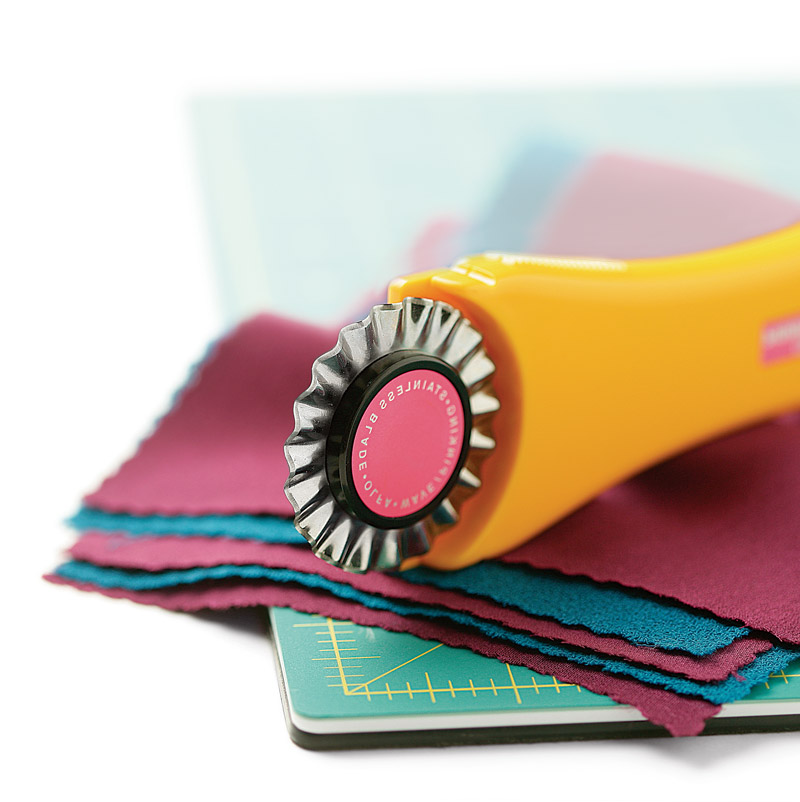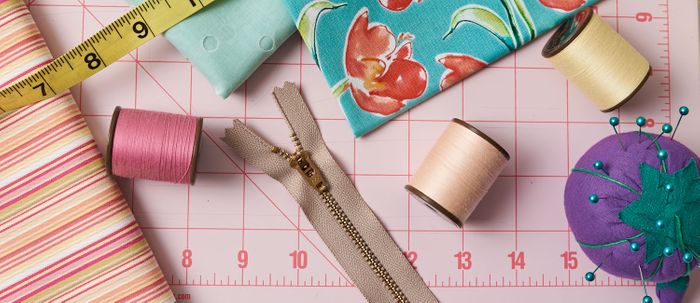Choosing and Using Rotary Cutters and Mats

Unlike scissors, a rotary cutter cuts through multiple layers of fabric and a pattern without lifting the stack off the table. Rotary cutters cause much less arm and hand strain than scissors, and most cutters work for either the right or left hand.
Scissors are essential to every sewer, but for cutting a pattern, I prefer a rotary cutter. Unlike scissors, a rotary cutter cuts through multiple layers of fabric and a pattern without lifting the stack off the table. A scissor blade can shift layers when it slides under them.


Cutting a seam with a rotary cutter’s razor-sharp circular blade is often as easy as a wave of your arm. And because they cause much less arm and hand strain than scissors, rotary cutters are ideal for arthritis sufferers. Most cutters work for either the right or left hand.
Using a rotary cutter requires a special mat underneath the fabric to protect your table and the cutter’s blade. Large mats are expensive—the main drawback to rotary cutting. I’ll tell you how to ease that expense below.
Rotary cutters come in a variety of sizes and shapes
Blade diameters determine the handle size and range from 18 mm to 65 mm (approximately 3/4 inch to 2 1/2 inches). Smaller cutters navigate tight curves such as armholes or necklines. Larger ones cut through heavier fabrics, loftier thicknesses, and more layers, and they move effortlessly along a straight or moderately curved seam.
|
|
|
|
|
|
|
|
|
|
|
|
![]()
![]()
Alternative cutting edges include blades for pinking or scalloping, which are interchangeable and far less expensive than their corresponding shears. Circle and point cutters provide unique cutting for specialized use.
All brands offer replacement blades, but you can extend…
Start your 14-day FREE trial to access this story.
Start your FREE trial today and get instant access to this article plus access to all Threads Insider content.
Start Your Free TrialAlready an Insider? Log in














Most rotary cutters can be used with either hand, though none of the ergonomic cutters can be. Look at the pictures of where the For those of us who have issues with our hands, the ability to switch hands is as important as ergonomics. I'd gladly have more than one rotary cutter if I could find a rotary cutter I can use with my left hand. A soft cushion handle helps, but it still puts the wrist in an awkward angle. Having had surgery on both wrists in the past, ergonomic is required. I'm mainly left handed, so left handed is required.
this is winderful cutter.